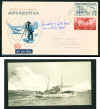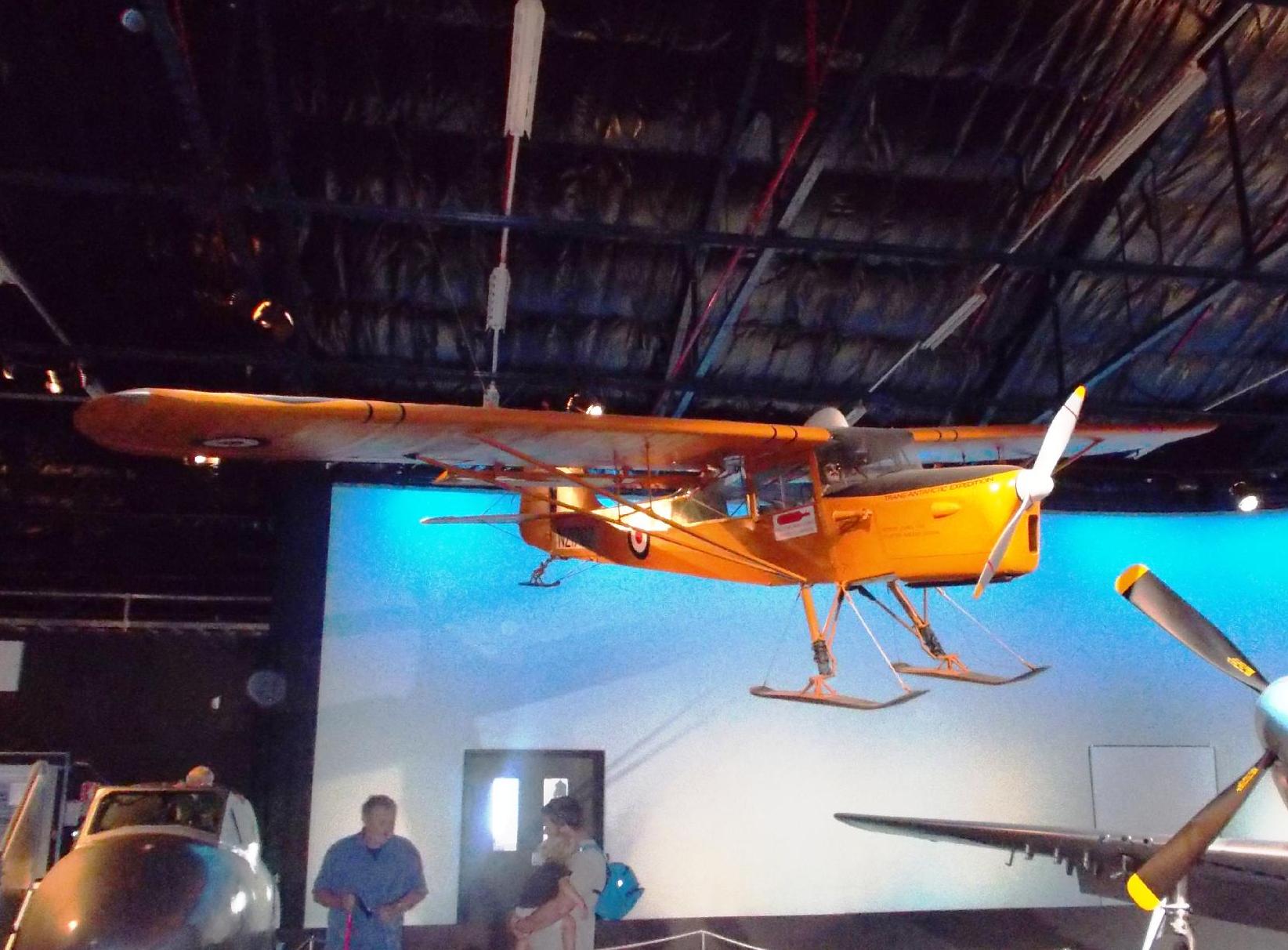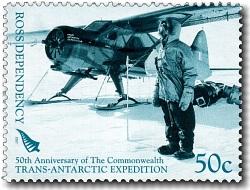HOME > STAMP SITES > New Zealand Antarctic Covers
HOME > STAMP SITES > New Zealand Antarctic Covers
|
|||||||
|
Welcome! Like my other sites this a virtual collection, this time of covers, with a fair bit of history worked into the mix and some science. I have chosen to start after the heroic age in a period where the covers are more readily available to collectors and end yearly coverage with the closure of the Scott Base Post Office. I have not covered the sub-Antarctic islands covers. Posting covers home was a tradition for polar visitors. The covers are relatively common and exist in great variety. --- The author of this site does not deal in these covers --- |
|||||||
|
New Zealand's Scott Base was established as part of the International Geophysical Year - IGY - joint Trans- Antarctic Expedition. It was named - of course - after Captain Robert Falcon Scott. Scott Base History Google
Earth file for location
The Ross Dependency stamps used there were first issued in 11 January 1957 before the official base opening. The post office initially operated in a Beaver aircraft crate, until the base was completed.
New Zealand uses the name Ross Dependency for the area and on the stamps. James Clark Ross was the commander of the British 1839-43 expedition to the area in HMS Erebus and Terror. Ross and Scott are both remembered by stamps in a 1972 British set. Erebus and Terror were later to carry Franklin on his disastrous Northwest Passage expedition and were lost on that voyage, along with all their crews. Ross Dependency stamp and cover catalogue values, and here.
Scott Base is on Ross Island. The first site chosen by New Zealanders travelling with the 1955/56 Deep Freeze party was Butter Point on the mainland but the Endeavour could not get close to that site, so Pram Point was substituted. The supply ship was HMNZS Endeavour, named after Cook's first voyage ship. Ship history. On board was the first expedition Auster aircraft. Also on board was a DH Beaver. A wing of the Auster was damaged when leaving Lyttleton (it overhung the side of the ship) and Endeavour diverted to Dunedin to offload the wing for repair. I saw the ship there as an 11 year old. One replica of the Beaver flies with New Zealand war birds and a second is in a museum. There is a National Film Unit documentary on the trip. It can be viewed on-line here. In the first section the Auster can be seen on the stern of the ship as it leaves Wellington. Endeavour arrived in Antarctica in December 1956. On January 20th 1957 Scott Base was officially opened. Sir Edmund Hillary was the Leader of the base establishment and the 1957 over-wintering party at the base. Over the 1957/58 summer the Trans - Antarctic Expedition (TAE) lead by Vivian Fuchs took place ending at Scott Base. The New Zealand contribution was a support team lead by Sir Edmund Hillary. The support team travelled overland to the US South Pole base (established in 1957), reaching it before Fuchs. The NZ party journey. The Massey Ferguson tractors used by Hillary were used at the Pole by the US for some years. The TAE sno-cats were left at Scott Base and used there afterwards. One is now in the Canterbury Museum. The Beaver aircraft was a vital support to the New Zealand party ferrying supplies, spares and relief crews onto the polar plateau and supporting the scientific parties.
The reason for a post office? It seems to have been as much about sovereignty as anything. That was important in the pre-treaty days when there were lots of competing territorial claims. Why not New Zealand stamps? Probably seen as a money making opportunity. Post operations started in Jan 11. The documentary linked above has film of covers being cancelled in the open.
|
|||||||
 The
cancellation is first day of issue The
cancellation is first day of issue
|
|||||||
|
|
|||||||
 FDC FDC
|
|||||||
 Card Card
|
|||||||
|
|
|||||||
 Signed
by the Endeavour captain- with pic Signed
by the Endeavour captain- with pic
|
|||||||
|
|
All cover illustrations are thumbnails |
||||||
|
1958
(thumbnail) The US base was established in 1955 in Operation Deep Freeze. More. The bases are two miles apart. Deep Freeze and McMurdo have a philately all of its own - Link
RNZAF Auster flying in support of a field party. The Auster was a T.7C model bought in 1956. It is preserved in the Wigram RNZAF Museum.
The Antarctic Air Force. The TAE Otter on the right was claimed as the first single engined aircraft to cross Antarctica, leaving Shackleton Base in January 1958 (see cover). However the Northrop Gamma Polar Star beat it by many years.


Five New Zealand scientists took part in IGY, the start of a now much enlarged scientific programme.
|
|||||||
 Cover
signed by Hillary and marked depot 700. Cover
signed by Hillary and marked depot 700.Depot 700 was the last before the pole. The expedition called there on the return from the pole at this date, but did not reach Scott Base until March 2nd 1958, so there must have been an aircraft mail pick up for this for the cancellation date to apply. |
|||||||
 Cover
to Scott Base from Shacklelton Base on the 6th of Jan 1958
trans-Antarctic flight. Cover
to Scott Base from Shacklelton Base on the 6th of Jan 1958
trans-Antarctic flight.
|
|||||||
 Christchurch
Packet Boat cancellation, Cachets: Hallett Station and NZ Geological
Survey Antarctic Expedition. Christchurch
Packet Boat cancellation, Cachets: Hallett Station and NZ Geological
Survey Antarctic Expedition.
|
|||||||
 IGY cover
IGY cover
|
|||||||
 Signed
by V Fuchs - Trans-Antarctic Expedition leader Signed
by V Fuchs - Trans-Antarctic Expedition leader
|
|||||||
 For
once - a straight forward cover that does not commemorate anything! For
once - a straight forward cover that does not commemorate anything!
|
|||||||
|
|
|||||||
|
|
All cover illustrations are thumbnails |
||||||
|
1959
Scott Base has been continuously occupied since 1957. A decision to make it permanent was taken in 1962. From the start there were small wintering over parties of 10 or more who maintained the base and performed meteorological recording and other scientific work at the base, and much larger groups of occupants over the summer seasons. |
|||||||
 IGY
and 1959
cachets IGY
and 1959
cachets
|
|||||||
|
|
All cover illustrations are thumbnails |
||||||
The author of this site does not deal in these covers.
Page author: G Law
25/03/2019